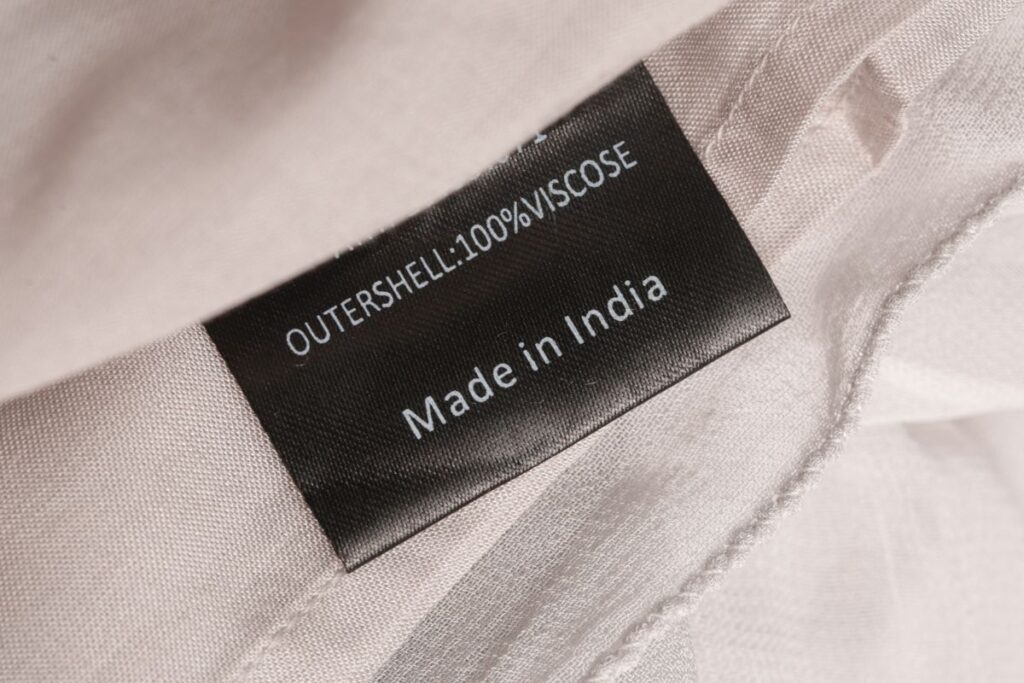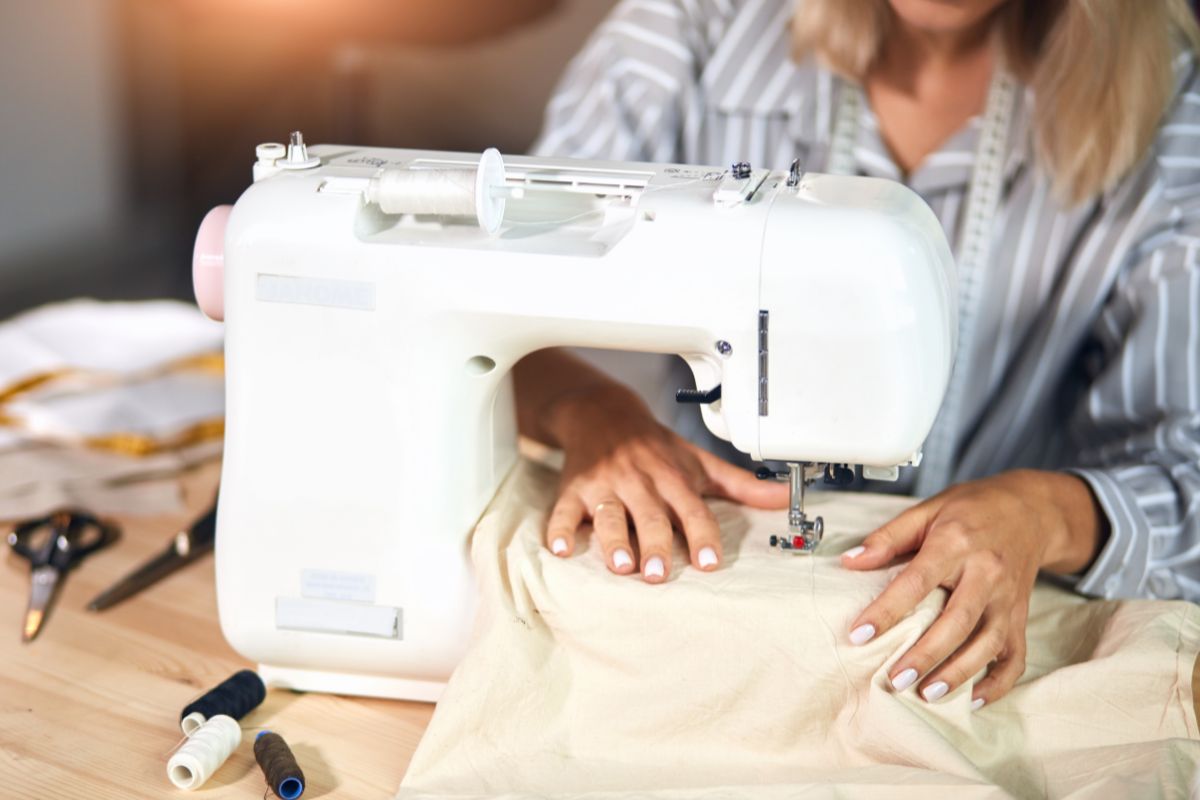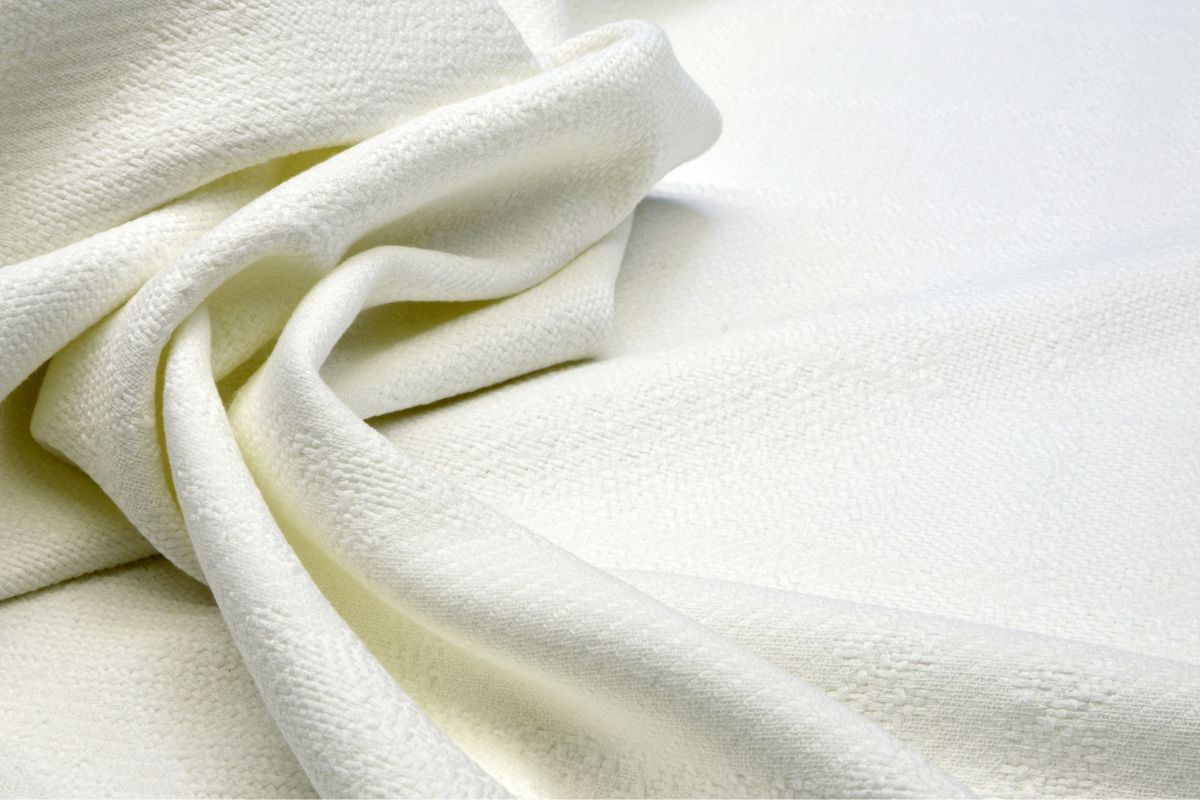When choosing fabrics for warm weather, breathability is key.
Viscose, a semi-synthetic material made from wood pulp, offers some advantages. It is generally considered breathable due to its ability to absorb moisture and allow air to flow through.
While it is lightweight and comfortable, viscose can also present some challenges.
Table of contents
- Understanding Viscose as a Material
- Characteristics of Viscose Fabric
- Advantages of Viscose in Clothing
- Comparative Analysis of Viscose with Other Fabrics
- Environmental Considerations and Innovations
- Maintenance and Care of Viscose Fabrics
- Global Market and Production of Viscose
- Frequently Asked Questions
- How does viscose compare to cotton in terms of breathability?
- Can viscose clothing provide comfort in hot weather conditions?
- What are the key characteristics of viscose that affect its breathability?
- Are there common disadvantages to wearing viscose fabric?
- Does viscose fabric contribute to increased perspiration?
- How does the breathability of viscose differ from synthetic materials?
For instance, it may feel sticky in high humidity and can shrink when washed. This mixture of benefits and drawbacks makes it essential to understand how viscose compares to other breathable fabrics.
In your search for the best summer clothing, knowing the properties of viscose can help you make informed choices.
By exploring its characteristics further, you can find suitable fabrics that meet your needs for comfort and style.
Understanding Viscose as a Material
Viscose is a versatile fabric made from wood pulp, which offers a unique combination of properties. It has eco-friendly options and is popular in various clothing items.
The following sections will explore the basics, production process, and how viscose compares to other materials.
The Basics of Viscose
Viscose is a type of semi-synthetic fiber. It is primarily made from cellulose, which comes from wood pulp sourced from trees like beech, pine, and eucalyptus.
Though it is derived from natural materials, processing it involves chemicals, making it semi-synthetic. This means it shares properties with both natural and synthetic fibers.
Viscose is known for its softness and lightweight feel. The fabric drapes well, making it popular in clothing like dresses and blouses. Its breathable nature helps keep you cool in warm weather.
Additionally, viscose is absorbent and aids in moisture control, drawing sweat away from your skin.
The Production Process of Viscose
The production of viscose involves several steps. First, wood pulp is dissolved in a mix of chemicals, including sodium hydroxide and carbon disulfide. This creates a viscous solution that can be spun into fibers.
The process is complex and has raised environmental concerns because of the chemicals used.
To mitigate these impacts, closed-loop production methods have emerged. This approach recycles chemicals, reducing waste and environmental harm.
Brands that utilize sustainable practices often refer to products like Ecovero, which is a more eco-friendly option of viscose, produced with less environmental impact.
Viscose Compared to Other Fabrics
When comparing viscose to other fabrics, it stands out for its softness and breathability.
Unlike cotton, viscose can mimic the feel of silk, making it a popular alternative in fashion. It contrasts with polyester, which is not as breathable and can trap heat.
However, the environmental impact of viscose production must be considered. While natural fabrics like organic cotton are generally eco-friendlier, they may not offer the same soft drape.
In recent years, consumers are increasingly interested in sustainable options, making Ecovero a sought-after choice.
Characteristics of Viscose Fabric
| Characteristic | Description |
|---|---|
| Material Type | Semi-synthetic fiber made from wood pulp. |
| Texture | Soft, smooth, and silk-like feel. |
| Breathability | Highly breathable, allowing airflow for comfort. |
| Absorbency | Excellent moisture absorption, making it ideal for humid climates. |
| Durability | Moderate durability; weaker when wet. |
| Wrinkle Resistance | Prone to wrinkling and requires ironing. |
| Stretchability | Limited natural stretch unless blended with spandex. |
| Drape | Flows well, offering an elegant and luxurious drape. |
| Eco-Friendliness | Made from natural sources, but production involves chemicals. |
| Common Uses | Used in dresses, blouses, scarves, and upholstery. |
Viscose fabric has several important characteristics that make it unique. It is known for its ability to manage moisture, regulate temperature, and provide comfort through its drape and soft feel. Understanding these features will help you decide if viscose is right for your needs.
Moisture Management in Viscose
Viscose has a strong ability to absorb moisture. This property helps wick away sweat from your skin, keeping you feeling dry.
Unlike synthetic fabrics, viscose allows moisture to pass through its structure, enhancing comfort during warm weather.
The fabric’s nanopores aid in moisture retention and evaporation. This helps you stay comfortable, especially in humid conditions. The lightweight nature of viscose also contributes to its performance, making it suitable for everyday wear.
Temperature Regulation and Airflow
Temperature regulation is another key feature of viscose fabric. It allows for good airflow, helping to keep your body cool.
When combined with its moisture-wicking properties, viscose can help maintain a stable body temperature, even during hot weather.
This ability to breathe also makes it ideal for summer clothing. Viscose can feel cool against your skin, similar to cotton. This advantage is particularly beneficial when you’re outdoors or active.
Drape and Comfort Attributes
Viscose is known for its beautiful drape and soft feel. The fabric flows nicely, which makes it look elegant in dresses and blouses.
It closely mimics natural fibers like silk and cotton, offering a luxurious touch without a high price.
Comfort is enhanced by its lightweight nature. You’ll find that viscose garments feel pleasant against your skin, making them great for all-day wear. Its smooth texture can make a significant difference in your overall comfort level.
Advantages of Viscose in Clothing

Viscose offers several benefits that make it a popular choice for many clothing items. Its breathability and comfort are essential for warm weather wear.
Additionally, viscose can play a key role in sustainable fashion and is known for its affordability and versatility. Understanding these advantages can help you make informed choices for your wardrobe.
Breathability and Comfort in Clothing
Viscose is known for its excellent breathability. This allows air to flow freely, helping you stay cool in hot weather.
The absorbent nature of viscose fabrics helps wick moisture away from your skin, keeping you dry during physical activities or in humid conditions.
This makes viscose a suitable material for summer wardrobes and activewear. It feels soft against your skin, enhancing comfort throughout the day.
When compared to other fabrics like cotton, viscose can provide a similar, if not better, level of comfort due to its silky texture.
Sustainable Fashion and Viscose
Viscose is often made from renewable resources like bamboo, making it an appealing option in sustainable fashion.
Bamboo grows quickly and requires less water than traditional crops. This means that viscose clothing can help reduce your environmental impact when chosen thoughtfully.
Modal and lyocell, types of viscose fibers, are also produced through eco-friendly processes. Brands that use Tencel, a popular lyocell brand, focus on sustainable practices.
Choosing garments made from these materials can support a more sustainable textile industry.
Affordability and Versatility
Viscose is generally more affordable than other luxury fabrics like silk. This affordability does not compromise its quality, making viscose a smart choice for budget-conscious shoppers.
The versatility of viscose allows it to be used in a wide range of clothing styles. From casual tops to elegant dresses, viscose adapts well to different designs. This adaptability ensures that you can find viscose fabrics in many items, making it easy to include in your wardrobe.
Comparative Analysis of Viscose with Other Fabrics
| Feature | Viscose | Cotton | Polyester | Silk | Rayon | Linen |
|---|---|---|---|---|---|---|
| Material Type | Semi-synthetic (wood pulp) | Natural fiber (plant-based) | Synthetic fiber (petroleum-based) | Natural (silkworms) | Semi-synthetic (wood pulp) | Natural fiber (flax-based) |
| Texture | Soft, smooth, silky | Soft, breathable, durable | Smooth, sometimes coarse | Luxurious, soft, smooth | Soft, silky, lightweight | Crisp, slightly rough |
| Breathability | High | Very high | Low | High | High | Very high |
| Moisture Absorption | Excellent | Excellent | Low | Good | Good | High |
| Durability | Moderate, weak when wet | High | Very high | Moderate | Moderate | Very high |
| Wrinkle Resistance | Prone to wrinkling | Moderate | Excellent | Moderate | Moderate | Poor (wrinkles easily) |
| Stretchability | Limited | Limited | Good | Low | Moderate | Low |
| Drape | Elegant, flowy | Moderate | Stiff, lacks natural drape | Excellent, luxurious | Good | Crisp, structured |
| Eco-Friendliness | Sustainable but chemical-heavy process | Very eco-friendly (organic options) | Not eco-friendly (plastic-based) | Sustainable but labor-intensive | Similar to viscose | Sustainable but requires water-intensive farming |
| Common Uses | Dresses, blouses, scarves | T-shirts, bedsheets, denim | Sportswear, outerwear | Luxury clothing, lingerie | Dresses, summer wear | Summer wear, table linens |
Viscose offers unique properties when compared to various fabrics. Understanding how it interacts with natural and synthetic fibers helps in choosing the right material for your needs.
Viscose and Natural Fibers Like Cotton and Linen
Viscose and natural fibers are known for their breathability, but each has its strengths. Cotton is a popular choice due to its soft texture and high breathability. It absorbs moisture well, making it ideal for hot weather.
Linen, on the other hand, has a crisp feel and excellent airflow, which makes it great for summer clothing. Viscose sits in between. It is softer than cotton and has a luxurious drape, making it appealing for stylish outfits.
When compared to bamboo, which is also a natural fiber, viscose has a similar softness. Bamboo is often seen as more eco-friendly because it is 100% biodegradable. Viscose, depending on its source, may vary in environmental impact.
Viscose Versus Synthetic Fabrics
When comparing viscose to synthetic fabrics like polyester and nylon, noticeable differences arise. Polyester is fully synthetic and known for its durability and resistance to shrinking and wrinkling. It’s a moisture-wicking fabric, making it functional for athletic wear.
Viscose, classified as a semi-synthetic fabric, provides softness and a more elegant drape. It may not be as durable as polyester but offers a cooler feel. Unlike nylon, viscose is not stretchy and lacks the strength of synthetic fibers, which can be a consideration for certain clothing items.
Considering blends, viscose can enhance the properties of synthetics. Blends like viscose/polyester combine softness with durability, while viscose/spandex adds stretch, improving fit and comfort. Each blend has its unique benefits.
Blends and Alternatives: Viscose Mixes
Viscose blends are versatile and can combine the best qualities of different fabrics.
A viscose/linen blend offers breathability and a lightweight feel, making it perfect for casual wear. This mix retains the crispness of linen while adding softness.
Viscose/silk blends serve as excellent alternatives for luxurious garments. These blends resemble silk’s beautiful drape but are often more affordable.
When it comes to viscose blends with synthetic fibers like spandex, the fabric gains stretchability. It allows for more fitted designs without compromising comfort.
You can find various options in viscos blends, making it easy to select the right fabric for your desired style and use.
Environmental Considerations and Innovations

When considering viscose, its environmental footprint and recent advancements in its production stand out. This section explores how viscose can be eco-friendly and the innovations making its production more sustainable.
The Eco-Friendly Aspect of Viscose
Viscose is derived from cellulose, primarily sourced from wood pulp, often from eucalyptus trees. This makes it a biodegradable option compared to synthetic fibers.
The production of sustainable viscose relies on responsible forestry practices to ensure that the raw materials are sourced without harming the environment.
Key Characteristics:
- Biodegradable: Breaks down over time, reducing landfill waste.
- Source Materials: Often comes from renewable resources, like fast-growing eucalyptus.
Using eco-friendly methods and materials enhances its image as a sustainable fabric choice.
Innovations in Production for Reduced Impact
Recent advancements aim to improve the environmental impact of viscose production.
Closed-loop production systems are a significant innovation in this area. These systems recycle solvents used in processing, reducing waste and emissions.
Innovative Practices:
- Closed-Loop Systems: Minimize harmful waste, making the process cleaner.
- Ecovero: A specific brand that exemplifies sustainable viscose, focusing on lower energy consumption and reduced CO2 emissions during production.
These techniques reflect a commitment to balancing industrial needs with ecological responsibility.
Viscose in the Context of Sustainable Fashion
The role of viscose in sustainable fashion is becoming more prominent. As fashion brands look for alternatives to conventional materials, viscose offers a versatile solution.
Its softness and drape make it popular for various garments.
Benefits for Sustainable Fashion:
- Versatile Use: Ideal for clothing, contributing to a more sustainable wardrobe.
- Consumer Demand: Increasing preference for eco-friendly fabrics leads to better practices in the industry.
With its biodegradable nature and potential for sustainable production, viscose can fit well within the principles of sustainable fashion, allowing you to make more responsible choices in your attire.
Maintenance and Care of Viscose Fabrics
| Care Aspect | Best Practices | Things to Avoid |
|---|---|---|
| Washing | Hand wash in cold water with mild detergent | Avoid hot water or machine washing (unless labeled safe) |
| Machine Washing | Use gentle cycle in a mesh bag (if permitted) | Avoid heavy agitation and harsh detergents |
| Drying | Lay flat to dry on a towel to prevent stretching | Do not wring, tumble dry, or expose to direct sunlight |
| Ironing | Use low heat with a pressing cloth | Avoid high heat, which can damage fibers |
| Stain Removal | Blot with mild detergent and cold water immediately | Avoid rubbing stains harshly, which weakens fibers |
| Storage | Hang lightweight viscose items; fold heavier ones | Avoid overcrowding to prevent wrinkles |
| Shrinkage Prevention | Wash in cold water and air dry naturally | Avoid high temperatures in washing or drying |
| Wrinkle Removal | Use a steamer or light ironing on reverse side | Avoid excessive heat or pressing too hard |
Caring for viscose fabrics is essential to maintain their quality and prevent damage.
Proper washing and drying techniques, as well as good maintenance practices, are key components of keeping your viscose items looking their best.
Washing and Drying Recommendations
When washing viscose, hand-washing is often the safest method.
If you choose to machine wash, use a delicate cycle with cold water. Always read the care label for specific instructions.
Avoid bleach, as it can damage the fibers.
If your viscose garment is heavily soiled, consider pre-soaking it in a gentle detergent for about 15-30 minutes.
For drying, it’s best to lay the item flat on a clean, dry towel and reshape it to its original form.
Avoid using a tumble dryer, as the heat can cause the fabric to shrink and lose its shape. If you need to hang it, use a padded hanger to avoid stretching.
Best Practices for Viscose Longevity
To prolong the life of your viscose fabrics, pay attention to how you store them.
Keep them in a cool, dry place, away from direct sunlight. Sunlight can fade the colors and weaken the fibers over time.
Avoid folding your viscose items for long periods. Instead, use hangers that support the garment’s shape.
For additional care, consider using a fabric protector spray that is safe for viscose.
When ironing, use a low heat setting and place a cloth between the iron and the fabric. This prevents direct contact, which could scorch the delicate fibers.
Regular maintenance keeps your viscose garments looking fresh and vibrant.
Global Market and Production of Viscose

Viscose is an important fiber in the textile industry, known for its breathability and comfort. Understanding its production landscape and market trends will give you insight into its global significance.
Leading Producers of Viscose
China is the world’s largest producer of viscose, accounting for approximately 66% of global production. The country has significantly increased its production capacity over the years, especially in the early 2000s.
Other leading producers include Indonesia and India, which are the second and third largest producers, respectively. The United Kingdom also plays a small role in the viscose market, focusing mainly on fabric innovation.
This distribution highlights the concentration of production capabilities in Asia, which impacts global supply chains in the textile industry.
Market Trends Affecting Viscose Supply and Demand
The global viscose market is experiencing growth, with estimates suggesting an increase from USD 15.55 billion in 2023 to USD 26.55 billion by 2032. The demand for sustainable and biodegradable textiles is driving this increase.
Key trends include a shift towards silk alternatives, as consumers seek breathable and comfortable fabrics.
The textile and apparel industry remains the largest consumer of viscose, followed by home furnishings and medical uses.
These trends reflect a growing awareness among consumers and brands about the environmental impact of materials, influencing how viscose is produced and marketed.
Frequently Asked Questions
You might have questions about viscose fabric, especially regarding its breathability and comfort. This section addresses your concerns with clear and specific information.
How does viscose compare to cotton in terms of breathability?
Viscose is not as breathable as cotton, but it still offers moderate breathability. This is partly due to its semi-synthetic nature.
While cotton allows for more airflow, viscose can still manage moisture well, making it a good option for various clothing.
Can viscose clothing provide comfort in hot weather conditions?
Yes, viscose clothing can be comfortable in hot weather. Its absorbent properties help wick away sweat from your skin.
This moisture management can keep you cooler compared to some other fabrics, allowing for more comfort on warm days.
What are the key characteristics of viscose that affect its breathability?
Viscose is known for its absorbency and moisture-wicking abilities. These traits help improve airflow and comfort.
Additionally, its lightweight nature contributes to a feeling of coolness when worn.
Are there common disadvantages to wearing viscose fabric?
Some common disadvantages include its tendency to wrinkle easily and lack of durability compared to cotton or linen.
Viscose can also lose shape after washing if not cared for properly, which might affect comfort.
Does viscose fabric contribute to increased perspiration?
Viscose does not contribute to increased perspiration. Instead, it helps manage sweat by absorbing moisture.
This quality can actually enhance comfort by keeping you dry during physical activities.
How does the breathability of viscose differ from synthetic materials?
Viscose is more breathable than many synthetic materials, like polyester.
Synthetics often trap heat and moisture against the skin, while viscose allows better airflow.
This quality often makes viscose a more comfortable choice in warm conditions.



